You are here
HAD News Number 78 - April 2011
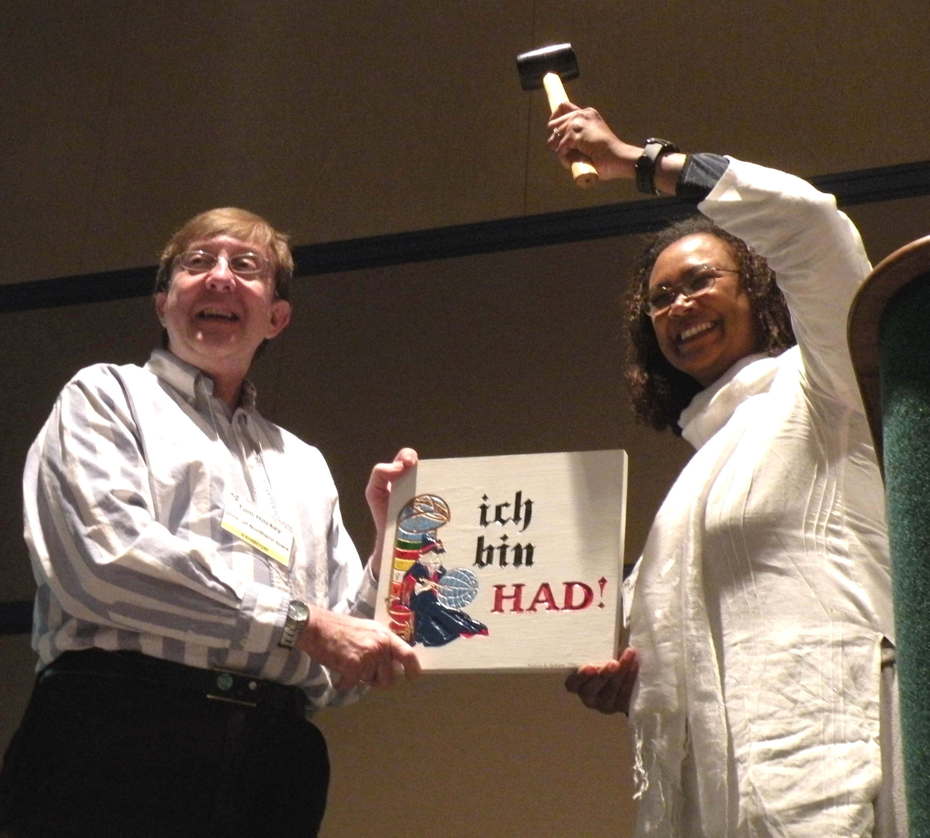
Regime Change in Seattle
Jarita Holbrook, University of Arizona, took over the reins of HAD at the close of the annual business meeting on 10 January in Seattle. The image shows her accepting the gavel and the "Ich bin HAD" plaque from Thomas Hockey, University of Northern Iowa, who is now Past Chair, which makes him chair of the HAD Prize Committee.
The new Vice Chair is Jay Pasachoff, Williams College. His duties include soliciting and editing the AAS obituaries. The new members of the HAD Committee are Richard Jarrell, York University, and Wayne Osborn, Central Michigan University. The sixth member of the HAD Committee is continuing Secretary-Treasurer Joe Tenn, Sonoma State University.
joe.tenn@sonoma.edu
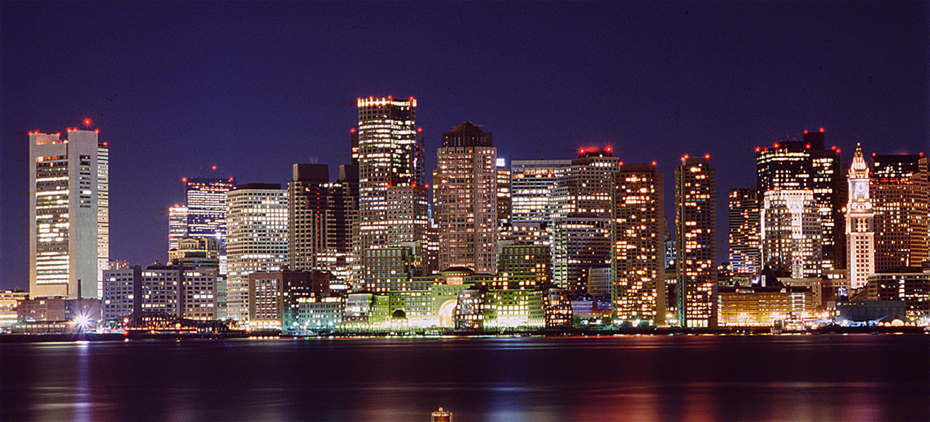
History of Variable Stars in Boston
Thomas R. Williams
On Sunday, 22 May 2011, The Historical Astronomy Division will hold an unusual second meeting for 2011. This will be a part of a joint meeting of the AAS and the American Association of Variable Star Observers (AAVSO) in Boston. Now celebrating its centennial, the AAVSO was founded in Norwich, Connecticut, in October, 1911, by attorney and writer William Tyler Olcott. During its first decade the AAVSO received support from E.C. Pickering and the staff of Harvard College Observatory and from 1919 to 1954 it had its headquarters at the HCO.
The HAD sessions will feature historical papers relevant to variable star astronomy. Ten invited papers have been scheduled in two topical sessions: I. Women in the History of Variable Star Astronomy, and II. Variable Star Astronomy in Theory and Practice. Organized by former HAD Chair Tom Williams, these two sessions will be informative to historians and astronomers from AAVSO as well as the AAS.
Session I, chaired by historian and former HAD chair Sara Schechner, offers the first of two installments of papers on women astronomers important to the history of variable star astronomy and of the AAVSO. This first installment will include papers by Barbara Welther, Kate Bracher, Maria J. Cahill, and Kristine Larsen. Welther and Bracher are, of course, former chairs of the HAD. Cahill recently completed her doctoral thesis on former AAVSO and RASC president Helen Hogg. As an astronomer, Larsen has also been active in the AAVSO Council and as an important contributor to its education programs.
The second installment on this topic will be presented as a part of the AAVSO Centennial Celebration in October, 2011, and will include papers on other important women in the history of variable star astronomy.
For Session II, to be chaired by AAVSO Director Arne Henden, the schedule of topics is an equally rich one, ranging from visual sightings of supernovae that can no longer be seen visually, and photographic discovery of variable stars, to the development of rigorous theoretical and computational models of stellar evolution, and the role that variability plays in that evolutionary process. The evolution of instrumental methods of observing variable stars will complete this session. Papers will be presented by astronomer Martin Lunn and English literature expert Lila Rakoczy, astronomer Linda French, historian Matthew Stanley, astronomer Wayne Osborne, astronomer Steven Kawaler, and astronomer and former AAVSO President John Percy. This session will also be continued at the AAVSO Centennial meeting in October. Titles and abstracts appear on the HAD website at http://had.aas.org/meetings/.
The meeting will also include a few contributed papers on historical astronomy. Just two — one oral and one poster — were submitted by the deadline, but additional poster papers may be submitted until the 22 April late paper deadline at http://aas.org/meetings/aas218/abstracts.
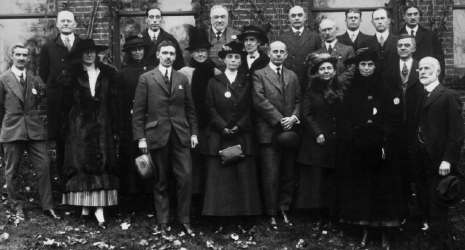
The AAVSO seventh annual meeting at Harvard College Observatory, 23 November 1918.

From the Chair
Jarita Holbrook, University of Arizona
Most of our members may not know that over the last year the African Astronomical Society (AfAS) has come into existence! Discussion for the creation of a society have been in the works for several decades. With a push from the US-based National Society of Black Physicists (NSBP), the South African Astronomical Society (SAAO), the International Astronomical Union (IAU) and the University of Nigeria, Nsukka, the formalities were completed in Ouagadougou, Burkina Faso, in December 2010. Ouagadougou was where the first IAU Symposium in West Africa, Symposium #277 Tracing the Ancestry of Galaxies on the Land of our Ancestors (http://www. iaus277.org), occurred in December 2010.
HAD member Hakeem Oluseyi was elected interim president until the official launch of the Society. That event will take place on April 13, 2011, in Cape Town, South Africa, as part of the second IAU Middle Eastern and Africa Regional Meeting, MEARIM II (http://mearim2.saao.ac.za/). I will be present at this historic launch of AfAS representing NSBP, AAS, and HAD. More information about AfAS can be found at http://www.africanastronomicalsociety.org.
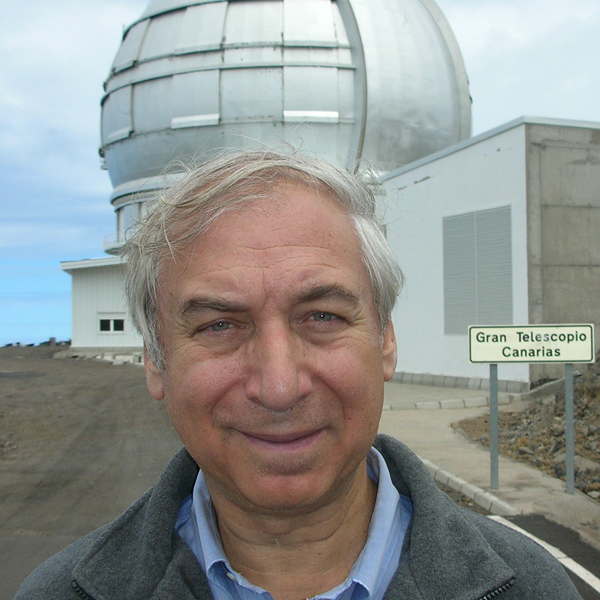
From the Vice Chair
Jay M. Pasachoff, Williams College
As new HAD Vice-Chair, I have inherited the role of chairing the AAS Obituary Committee and arranging for and editing obituaries for all deceased AAS members and former members. The obituaries have appeared in the Bulletin of the American Astronomical Society, but that publication is now exclusively online, so arrangements for making the obituaries public are in flux.
AAS staff members Kevin Marvel, Judy Johnson, and Crystal Tinch are deciding on final arrangements, with the notion that they would rather get the arrangements right than get them done quickly. There will continue to be an index and links from the HAD website at http://had.aas.org/obits.html and from the SAO/NASA Astrophysics Data System (ADS) (http://www.adsabs.harvard.edu/), but where they are posted has not yet been decided.
In the electronic format, we will have room for at least one photo as well as links to web pages. In the meantime, about two dozen obituaries were finished under Jarita Holbrook's watch, and are awaiting publication in the electronic volume 43 of BAAS. Among those are entries for Jack Eddy, Robert Koch, Tom Van Flandern, Glenn Frye, Earle Mayfield, Beth Brown, Chi Yuan, Sumner Davis, David Band, Clifford Toner, Henry Albers, Harry Fulbright, Roy Garstang, George Bowen, Timothy Hawarden, John Davidson, Andrew Lange, Geoffrey Burbidge, Martin McCarthy, Alan Fiala, Leonard Searle, Chushiro Hayashi, Sam Roweis, and Frank Low.
Unfortunately, our friends and colleagues continue to die, and I find a steady, perhaps weekly, rate of notifications of the need for new obituaries. Among those I have arranged, and which are in preparation, are those for Brian Marsden, Ben Peery, John Huchra, Allan Sandage, Mike Lecar, John Oliver, Mal Raff, James Elliot, Martin Pomerantz, Leif Robinson, and Adriaan Blaauw. We still need writers of obituaries for Tom Ahrens and Donald Hunten. Any volunteers?
All prospective obituary authors receive guidelines and a link to John Lankford's harangue calling for essential information about deceased astronomers to be preserved for future historians. See his "A Crisis in Documentation: The Decline of the Obituary as a Source for the History of Modern Astronomy" at http://adsabs.harvard.edu/abs/1984BAAS...16..560L. Its publication led directly to the AAS Council's decision to publish obituaries of all deceased AAS members.
Does anyone have AAS directories more than ten years old? They would be helpful to me.
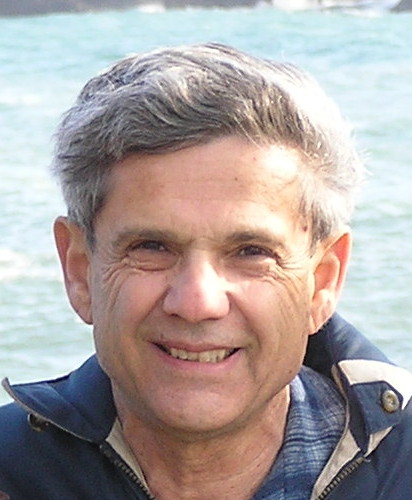
From the Secretary-Treasurer
Joseph S. Tenn, Sonoma State University
Some readers may recall my quiz in the last issue of HAD News. Among other questions I asked the largest number of historical papers ever presented at a AAS meeting. The answer was 33, at the Chicago meeting in May 1999. Well, records were made to be broken. We had an astounding 38 papers presented in Seattle in January. This was in no small part due to Wayne Orchiston and his contingent from James Cook University in Australia, the presenters of 14 of those papers.
The HAD Survey brought the welcome news that most HAD members are rather satisfied with the Division's recent activities, plus many useful suggestions. See Ozzie Osborn's summary on this page. In response I have added a list of other organizations involved in historical astronomy to the HAD website. Other responses include Greg Good's article on page 4 explaining that the AIP Center for the History of Physics is already performing some of the actions proposed to HAD and Jim Lattis's on the doings of WGPAH (page 5).
In other news, the HAD Prize Committee is busy studying the work of eight distinguished nominees in order to choose one to receive the 2012 LeRoy E. Doggett Prize for Historical Astronomy.
I am also adding more information — links to photos and articles on early AAS meetings — to the history of the AAS on the HAD website.
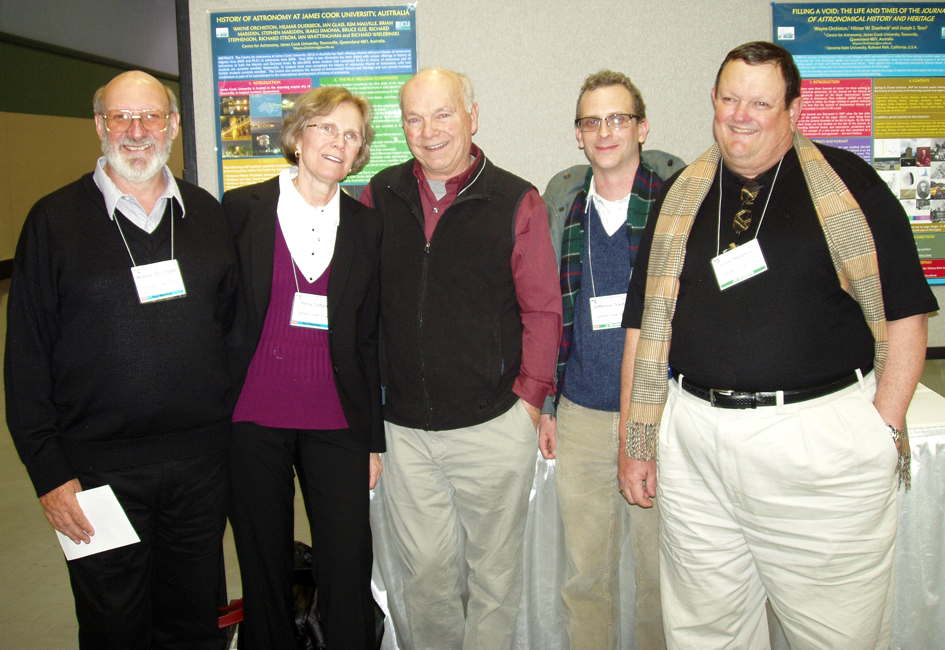
Wayne Orchiston and some of his past and current JCU students, Stella Cottam, William Wells, Jefferson Sauter, and John Pearson, at the Seattle meeting.
Results of the HAD Survey
Wayne "Ozzie" Osborn, Central Michigan U.
HAD has about 300 members, including not only astronomers but also historians, archivists, educators and others. To learn how well HAD is serving this diverse group, an on-line survey of members was conducted this past February.
Below is a summary of the results. Feel free to draw your own conclusions and send them, and any other comments, to any HAD officer. We thank the 73 members who took time to answer the survey. The response rate was satisfactory, but we point out that the relatively small numbers imply sampling errors larger than in typical polls.
Overall satisfaction with Division activities was rated 4.2 out of 5. All current activities (newsletter, meetings, prizes, web page, and student travel awards) were rated 4.0 or higher. We see this as saying we should continue carrying out these activities and not make major changes.
As we had hoped, many respondents suggested additional things that the Division might engage in. Those mentioned more than once were organizing another cultural astronomy school, engaging in more public outreach, working more closely with the AAS's Working Group on Preservation of Astronomical Heritage on saving instruments and historical papers, having more HAD-organized field trips with our meetings, increasing HAD visibility by improving our booth, and improving our relations with other organizations, such as the Antique Telescope Society, Notre Dame Conferences, other AAS divisions, the American Physical Society Forum on History of Physics, and foreign societies.
Thirty-four percent of the respondents had attended three or more HAD meetings in the last five years, and another 45% had attended one or two. As context, in the five year window 2007-11 there were five official HAD meetings, all held jointly with winter AAS meetings, in Seattle, Austin, Long Beach, Washington, and Seattle again. Two-thirds of respondents reported a desire to attend more meetings, and it seems that the lack of geographical and time-of-year diversity impedes participating in HAD meetings by some. No fewer than 39 members wrote in reasons for attending fewer meetings than they would like. Fifteen percent of these reported that the location of the meeting was an important factor in deciding whether to attend, usually opting to do so only when the meeting location was reasonably nearby. Thirteen percent said the early January meeting time of the winter AAS meeting made attendance difficult or impossible.
The other commonly mentioned factor for lack of regular attendance was the cost of attending (33%). A significant fraction of members said they must pay all or most of the cost to attend out of their own pockets. Several others said that having HAD meet in conjunction with the AAS was the only way they could achieve support to attend HAD (but a few said that this has produced conflicts between the HAD sessions and other scheduled AAS activities of interest).
Most respondents favored having HAD continue to meet at winter AAS meetings, but nearly 40% would like to see half the meetings be at other locations and times. Meeting from time to time with other groups of similar interest was mentioned by some. There was almost no support for HAD trying to organize a meeting on its own.
Most respondents (85%) are AAS members, as are 88% of all HAD members. One-third of the respondents are retired; by comparison 23% of our members have emeritus membership (so it seems retirees have more time to fill out surveys!). About 33% identified themselves as historians, educators or other professionals rather than as physical scientists. Survey respondents are from the East Coast (36%), West Coast (18%), South (6%), other U.S. (33%), and abroad (7%, mostly in Canada). Perhaps HAD attendance of those who live in the country's interior tends to be low because most recent meetings have been on the two coasts.
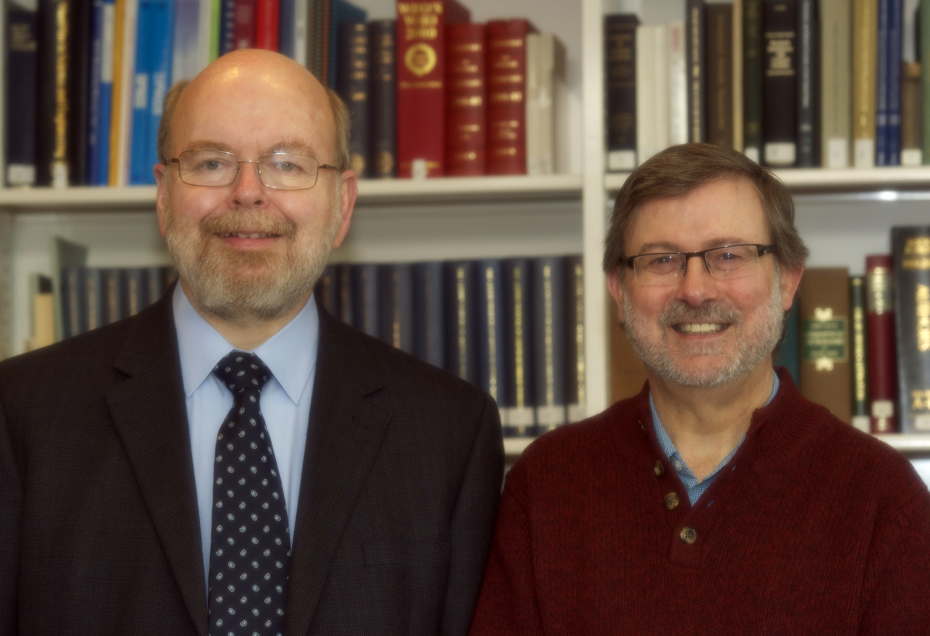
NBLA Director Joe Anderson and CHP Director Greg Good.
History of Astronomy at the AIP
Greg Good, Director
Center for History of Physics
The American Institute of Physics (the umbrella organization that includes the American Astronomical Society, American Physical Society, and eight similar organizations) supports two distinct history programs: the Center for History of Physics (CHP) and the Niels Bohr Library and Archives (NBLA). These programs can serve HAD members in a variety of ways.
Among the functions of NBLA is the preservation of AIP's Member Societies' records. In the last year, the library has accepted a new batch of material from AAS related to Society matters. We now have 168 linear feet of AAS records [including HAD archives] in the collection, along with 21 cassette tapes and 3 films.
The library is also an information clearinghouse and maintains and constantly expands the International Catalog of Sources (ICOS), a worldwide union catalog of individual scientists' manuscript collections: their letters, notebooks, and other important papers. (Looking for Edwin Hubble's letters to colleagues? Check ICOS). NBLA does not usually accept the papers of individual scientists, but we do help to find an appropriate home for such
collections.
In addition, the Library cares for a growing collection of 18,000 titles, focused on the physical sciences — including astronomy — of the 19th and 20th centuries, as well as 30,000 photographs, more than 1,000 oral history interviews, a number of institutional histories, and more. For example, you can find photos of astronomers at http://photos.aip.org/index.jsp or read transcripts of oral history interviews with astronomers (http://www.aip.org/history/ohilist/).
In 2010, the CHP online exhibits received more than 1,100,000 visits. "Cosmic Journey" (http://www.aip.org/history/cosmology/) by Norriss S. Hetherington and W. Patrick McCray provides an expansive discussion of the history of scientific cosmology. The Center also organizes conferences and other programs. We are working with Ozzie Osborne and AAS to preserve astronomical glass-plate negatives. Two other societies (APS and AGU) have expressed interest in developing systematic, ongoing oral history programs. The Center for History of Physics will work with any Member Society to explore its ideas regarding activities and projects having to do with history.
That does not mean we can take on all ideas. Our staff is small. Historic preservation of old observatories is a good idea, but beyond our expertise. We won't be taking thousands of glass-plate negatives, either, since our space is limited. We do address educational issues, for example posting syllabi of historical courses. We are remodeling this part of our web site in 2011, so wait a while before sending your syllabi to us!
In the fall of 2011, the Center for History of Physics and the Niels Bohr Library and Archives will organize a one-day workshop for Member Society officers and volunteers interested in encouraging historical activities in their societies. To get on the workshop list, contact me.
What is WGPAH?
Jim Lattis, University of Wisconsin, Madison
Chair, WGPAH
All scientific disciplines take an interest in their historical development, but astronomers have especially strong interests and rich traditions in this respect: History typically finds important roles in the teaching of astronomy and in public outreach; many astronomers have themselves made significant scholarly contributions to the history of their field; and historical studies have been and are increasingly relevant to scientific questions of interest to working astronomers. Hence, one of the divisions of the AAS is the Historical Astronomy Division.
It is less well known that the AAS Council has established a working group to bring together expertise on issues related to historically significant sites, instruments, documents, and other materials related to the history of astronomy, collectively conceived as "astronomical heritage." Working groups, according to the AAS bylaws, "may hold meetings, identify problem areas, and take such actions as are necessary for the purpose of coordinating and aiding in the general purposes of the Society." Our Working Group on the Preservation of Astronomical Heritage,
HAD and WGPAH, despite considerable overlap in interests and membership, are organizationally separate from each other, with the working group reporting directly to the AAS Council. Working group members (excepting the Chair) need not be AAS members or affiliates, although the majority of WGPAH members are. This structure allows the working group to include expertise that is not easily found in the AAS membership, such as curatorial, archival, archaeological, or other skills. The twelve members of the working group are "charged with developing and disseminating procedures, criteria and priorities for identifying, designating, and preserving astronomical structures, instruments, and records so that they will continue to be available for astronomical and historical research, for the teaching of astronomy, and for outreach to the general public."
The working group has no funding and no staff aside from administrative support from the AAS office. Fortunately we do have impressive resources: the knowledge and experience of our members. In practice, the working group acts as a source of expertise and advice for the Council, as a liaison with other organizations in appropriate areas, and as a point of contact for inquiries on issues of historical preservation. In addition, the working group can endorse and even undertake initiatives that the members think are important.
Current composition of the working group, as well as other information, can be found at its web page: http://members.aas.org/comms/wgpah.cfm. The working group members represent specified specialties: archives, instruments, observational data, working observatories, historical observatories, history of astronomy, and archaeoastronomy. The working group typically meets at the annual HAD meeting, and submits an annual report to the Council.
The working group has undertaken several different projects since its formation. One, at the request of the AAS Council, was a study of the current conditions and status of the editorial archives of the Astrophysical Journal. This resulted in a report to the Council with recommendations covering the physical disposition of the archival materials and guidelines for editorial and refereeing confidentiality. The project's recommendations were influential in bringing about changes to policies for AAS journals on the period of time referee reports and editorial correspondence must remain confidential and unavailable to historians.
Another major project was the Census of Astronomical Photographic Plates in North America carried out primarily by Lee Robbins and Wayne Osborn. That report can be downloaded from the WGPAH web page (above) and also figured into a closely related publication. (W. Osborn, L. Robbins, eds., Preserving Astronomy's Photographic Legacy Astronomical Society of the Pacific Conference Series, Vol. 410. San Francisco: Astr. Soc. Pac., 2009.)
Recently the working group has been planning to convene a workshop of specialists on the preservation of historical astronomical data with the goal of compiling and publishing guidelines, techniques, and resources to encourage and assist in the preservation and accessibility of, for example, photographic scientific information. A proposal for funding that workshop, prepared and submitted with the assistance of the AAS, is currently under consideration by NSF.
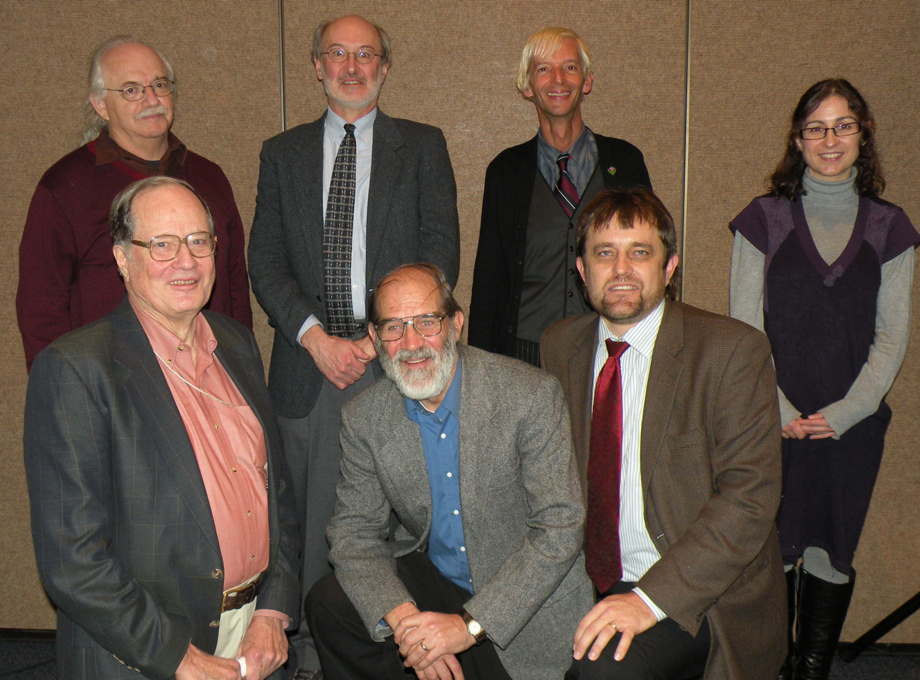
Speakers in the Herschel session in Seattle, January 2011: Front: Thomas Hankins, Woody Sullivan, Marvin Bolt; Rear: David DeVorkin, Robert W. Smith, Cliff Cunningham, Emily Winterburn.
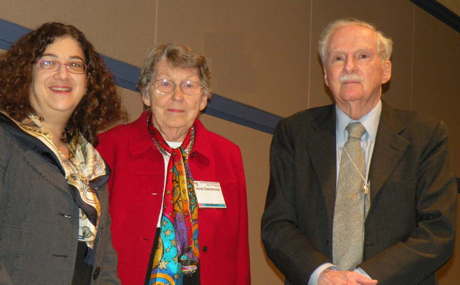
Nathan Sivin (right) at the presentation of the first Osterbrock Prize with HAD Prize Committee Chair Sara Schechner (left) and Irene Osterbrock.
The Osterbrock Prize Lecture
Nathan Sivin, University of Pennsylvania
Editor's Note: Professor Sivin has generously provided HAD News with a copy of the remarks he made upon receiving the Donald E. Osterbrock Book Prize in Seattle. As reported in our last issue, the prize was awarded to him for Granting the Seasons: The Chinese Astronomical Reform of 1280, With a Study of Its Many Dimensions and an Annotated Translation of Its Records (New York: Springer, 2009).
When I was a graduate student in the history of science, it was a straightforward field. There was one single history of astronomy, which began with Babylonian clay tablets and Greek geniuses, and progressed to the present day. Every year or two or three there would be an article about the exotic astronomy of somewhere else, but astronomers who lacked a taste for the exotic had no reason to read them. We divided the actors on the historical stage into Great Men and losers. Everyone — or almost everyone — assumed that there was no point in learning about anything but right answers.
We learned that the main line had an odd discontinuity in the middle, since between about A.D. 200 and 600 Europeans pretty much lost their ability to make exact observations, keep elaborate technical records, and do complex calculations. They needed the better part of a thousand years to recover. Luckily, the story went, the Middle East preserved the European records intact until the time came to hand them back. We thought of the Islamic world as a kind of faithful custodial sidekick, more or less a Tonto to Europe's Lone Ranger.
As more and more historians became fascinated by traditions outside Europe, and learned the languages needed to study them, the picture came to look very different. The long evolution of occidental astronomy, far from being the norm, was the odd one out, ideal for studying dysfunction. That was because of that mass rejection of classical learning in the middle of it, and, later, the West's extreme dependence, first on Islamic learning for over 400 years and then on documents from Byzantium, as it slowly regained the world level, and after that the great speed with which it accelerated to the forefront.
A little over twenty years ago, I pestered my colleagues in various parts of the world to find out how many specialists there were on the history of Chinese science and medicine, defined as people who published research using primary sources or artifacts. It turned out that in 1988 there were roughly a thousand, and that number has been growing since. What they study is the record of nearly 2500 years' uninterrupted work in computational astronomy, cosmology, and (rarely) astrology. There in China, in other words, not in Western Europe, is the long unbroken sweep of history. A thousand, or by now perhaps 1500, researchers have more than enough to do. But given the cascade of publications on this tradition from China, Japan, Europe, and North America since 1980, we finally have a defensible idea of what that evolution was like. Chen Meidong's three ingenious surveys of astronomical history published between 1995 and 2003 have replaced the 50-year-old tentative exploration by Joseph Needham.
There are also many historians of Islamic astronomy, a number who study Japan and Korea, and a handful who have worked on India. Their writings give us a very rough sketch of an overall picture. In that picture, the beginnings lie in the Babylonian world, the Greek achievements were an important but transitory phase, and the focus then shifted for centuries back to the Middle East. It served as a melting pot not only for its own ancient traditions and innovations from Persia and elsewhere, but for new understandings and techniques from India, China, and early Europe. Then from about the year 1000 on, Europeans learned about the intellectual riches of the Muslim world. It was the cosmopolitan mixture in Islam of methods and ideas that made possible the studies of European scholastics, those of the table-makers, and then those of the mathematical cosmologists from Copernicus on. In other words, the history of astronomy has turned out to be as pan-Eurasian as that of the other sciences.
Not only is the Chinese side of the story uninterrupted, but it turns out to be based on a different set of choices from all the possible ways of thinking quantitatively about the sky. For example, its degrees were each based on one day's mean solar motion, so there were 365¼ of them, rather than 360, in a circle. Some historians have fixed ideas about the superiority of 360, but over many centuries the Chinese choice turned out to be just as convenient. Their approach to quantification was numerical rather than geometrical, closer to the design of present-day computer programs than to Ptolemy's approach. Still, from the 11th century on, some Chinese astronomers began developing their tools in the direction of spherical trigonometry.
Their numerical approach led to many concepts not at all like those of Europe. For instance, since they had no reason to picture a precession of the equinoxes, or a rotation of the equatorial pole around the pole of the ecliptic, they accounted for the same phenomena with a concept they called the Annual Difference (suicha). This quantity was the difference between the sun's position at the end of a sidereal year and a tropical year. And, since there were 365¼ degrees in a circle, this was a gap in time as well as in space. The numerical results, and the rigor of the model, were the same as with the Western approach.
Over more than two millennia, many documents were naturally lost, but what survives is still extremely rich. There is hardly a question you can ask that you can't find an answer to. The Chinese records are exactly dated and fully set out, precise when there is a reason for them to be, and — when there isn't — often discursive and reflective.
In the third century B.C., China became a centrally governed empire, and soon became larger than all of Europe. One of the cornerstones of imperial ritual was the issuance of an ephemeris, an almanac that predicted the year's celestial phenomena. That act of "granting the seasons" quickly reached an exactitude that far surpassed the needs of agriculture and bureaucracy. But because its main purpose was to show symbolically the state's control of time, alongside its dominion of space, there was always motivation to improve.
For well over 2000 years the state maintained a technical bureaucracy to observe and record the phenomena, work out ways to predict them, interpret the astrological meaning of unpredictable events, write the annual almanacs, and publish them. Its astronomical bureau accumulated records of observations that became an increasingly powerful collection of data for improving prediction. For instance, the system of computation adopted for official use in the year 1280 tested its method of solar eclipse prediction against, among other data, records of 71 eclipses observed from 720 B.C. on.
Each system was a series of steps that a low-level official with no expertise in astronomy could follow to compute an annual ephemeris. The ephemerides were somewhat like Ptolemy's Handy Tables, or the handbooks just beginning to be printed in Renaissance Europe, or the zij of the Muslim world. The historical record was so voluminous because it was normal, when important predictions failed, to replace the whole system of prediction instead of mending it. In some dynasties it became usual to order up a new system to mark the reign of a new emperor, or to advertise a political new deal. Over 2500 years, we have records of roughly 200 astronomical systems, and reasonably meaty information about half that many. The government officially adopted roughly fifty of them.
Compared with the lonely efforts of Copernicus or the difficulties of the noble Tycho Brahe in meeting the payroll of his small technical staff, this was a large-scale enterprise with a large budget. Seven civil servants of substantial rank planned the project of 1280. It also included 16 administrators, 13 observers, 14 human computers, 4 timekeepers, 2 instructors, 2 editors, 15 printers, 11 clerks, and 44 students. On top of that there were consultants, and platoons of artisans who built the new buildings and instruments for the project. The fact that there were so many administrators tells us that China was a true bureaucracy long before Westerners even dreamt of that organizational form.
Another sign of a civil-service mentality is the great detail of the records that the government kept. The final report of the 1280 project submitted to the throne and archived in the astronomical bureau amounted to 105 chapters. A chapter was no more precise a measure in China than in the West, but 105 of them could easily amount to over 2000 pages. Nearly half of that was a detailed empirical study of the apparent motions of the five planets. What survived the wars, cataclysms, and revolutions to the present day are a summary in four chapters published, as usual, in the dynastic history. That was an enormous loss, but the fact remains that the four chapters themselves are a highly detailed account of the system of prediction and the methods used to test its accuracy. They amount to 300 pages in English translation.
In addition to computational astronomy, the standard histories included observations of phenomena that were difficult or impossible to forecast. For instance, a recent compilation of comet observations drawn from these sources includes every return of Halley's comet for more than 2000 years. The observers didn't know that they were all the same comet, but neither did anyone else before the 17th century. Datings of supernovas and the decay of their bright light have made it possible to identify their remaining radiation today. Many of you are familiar with the registers of solar and lunar eclipse records from the same sources and those of other civilizations by Richard Stephenson, John Steele, and others. Some of the early records went far beyond astronomy; for example, over the same period we know the dates of a great many large-magnitude earthquakes at many locations.
Acquaintance with the history of non-Western astronomy can also help us in thinking about what originally filled what are now blanks in European history. For instance, my colleague Christopher Cullen has pointed out that Ptolemy's approach to computation was so comprehensive and sophisticated that the detailed work of most of his predecessors in the Greek-speaking world is lost. Nor do we know the circumstances of Ptolemy's work.
On the other hand, if we look at the comparably innovative Zhang Heng (78-139), who died about the time the Almagest was written, we can trace in detail what circumstances led to change. This is because of the minute documentation customary for affairs of the imperial court, and because, given the nature of the bureaucracy, people who proposed change of any kind had to argue for it, normally in writing.
My examples come from China, but they could just as well have come from other astronomical traditions. Being a specialist makes it possible to achieve understanding in depth, but it can also encourage ignorance about the rest of human endeavor. If we want to get away from the worn-out myth of a pure European tradition of science and learn more about how astronomical actually evolved; if instead of idly speculating about the possibilities of astronomy we want to know the full range of what did happen; if we want to take advantage of the widest range of ancient records to solve current problems, it isn't a bad idea to take the world as our unit of exploration.

First observation of the transit of Venus by William Crabtree in 1639. From an etching of a 19th century mural by Ford Madox Brown.
Transits of Venus Papers Sought
Hilmar W. Duerbeck, James Cook University
Chair, IAU Transits of Venus Working Group
The IAU Commission 41 Transits of Venus Working Group (http://www.historyofastronomy.org) is pleased to announce that the March 2012 issue of the Journal of Astronomical History and Heritage will be a special issue devoted to papers on historical Venus transits. Interested authors should contact editor Wayne Orchiston (wayne.orchiston@jcu.edu.au), associate editor Hilmar Duerbeck (hilmar@uni-muenster.de), or associate editor Joseph Tenn (joe.tenn@sonoma.edu); manuscripts will be due in October, 2011. See the journal's website at http://www.jcu.edu.au/school/mathphys/astronomy/jah2/index.shtml for more about the JAHH. Note: starting in 2012 the journal will be published online, and it will be free via ADS.
Austin Meeting Next January
The Historical Astronomy Division will meet once in 2012, as part of the AAS meeting in Austin 8–12 January. There will be two HAD Special Sessions.
Jay Pasachoff and William Sheehan are organizing a session on "Transits of Venus: Looking Forward, Looking Back." They point out that the 6 June 2012 transit of Venus will represent the last chance to observe one of these rare events from Earth until the next pair starts in 2117. This year's transit will be extremely advantageous as almost all of the most populated areas of the Earth will be able to view at least some of it.
This session is devoted to some aspects of the history of transits, but especially those phenomena significant for current astronomical and astrophysical research.
Historically, the transits of Venus were singularly important both in astronomy and in the geographical exploration of our own planet. This importance was reflected in the massive preparations and far-flung expeditions in the 18th century to better measure the solar parallax. The 19th century transits played out against a background of rivalries among the great European powers, which were then at their height but sliding toward the Great War of 1914–1918. The 2012 transit offers an opportunity to revisit the important expeditions of the past and to engage in "experimental archaeology," the reconstruction of past observations to the extent possible using historical instruments and techniques and/or observing from the same locations used by earlier observers.
However, the main topic of this session is to review through the history of the transits a number of critical problems that remain relevant and can be addressed by modern high-resolution observations from Earth and space. One of these is the detailed profiling of the atmosphere of Venus. Another is the unique opportunity transits of Venus (and Mercury) afford as local analogues to exoplanet transits across their parent stars, which are the focus of many contemporary astrophysical investigations and space missions whose goals are to understand the prevalence and structure of planetary systems very different from our own solar system. In short, though transits are often said to be of strictly historical interest, since the Halleyan solar parallax method has long since been superseded, we hope to show that transits of Venus continue to be of great importance to astronomers and astrophysicists working at the cutting edge of important problems of today.
Marc Rotenberg is organizing a session on "Funding Astronomy post-World War II." He summarizes the session:
Thanks to the establishment of the National Science Foundation and the National Aeronautics and Space Administration in the United States, and various agencies in Europe and Asia, there has been a massive influx of government funds into national and international astronomy during the last sixty-five years. At the same time, traditional sources of support, such as the Carnegie Institution of Washington, have continued to find their own niches in the new world of patronage. This session will explore the impact of the new patterns of patronage on astronomy in the United States and elsewhere.
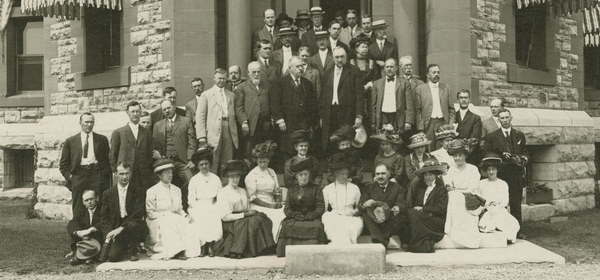
The Astronomical & Astrophysical Society of America, meeting in Ottawa, August 1911.
Old Yerkes Photos Now Online
Judith Dartt, University of Chicago Library
Yerkes Observatory, splendidly situated on Wisconsin's Lake Geneva, was formally dedicated in 1897. The celebration, which marked the opening, was held the week of October 18 through 22. In the observatory's programme of dedication, the preliminary event listed is a conference of Astronomers and Astrophysicists, the first held by the group, which was the forerunner of the American Astronomical Society. See http://had.aas.org/aashistory/7meetings.html.
During this meeting, prominent astronomers addressed varied topics of interest. Dr. Sherburne W. Burnham, for example, used Yerkes' new refractor telescope to show the audience a selection of double stars. And, Carl Runge, director of the Spectroscopic Laboratory of the Technische Hochschule, travelled from Hanover, Germany to deliver a talk on "Oxygen in the Sun."
Attendees, many of whom inscribed their names in the observatory's guest book, assembled in the magnificent building the morning of Thursday, October 21. With the president and trustees of the University of Chicago, the donor Charles Tyson Yerkes, and the newly-appointed staff, they witnessed the director George Ellery Hale, set the formal ceremony of the observatory's presentation and acceptance in motion.
Though unfinished at time of the dedication, the grounds of the new observatory were laid out by the well-known landscape designer John Charles Olmsted. The design of the beautiful building was envisioned by the architect Henry Ives Cobb. The manufacturer Warner & Swasey constructed the 90-foot observatory dome, under which a fearless, though unnamed, workforce installed the components of Yerkes' 40-inch refractor. The largest of its kind, the telescope had been fitted with lenses, which the renowned instrument maker Alvan Graham Clark, and his assistant, Carl Lundin, had polished and perfected from enormous glass disks cast by the optical works Mantois of Paris.
George Ellery Hale and his staff were the first, but by no means the last of a line of extraordinary men and women who would inform the observatory's life and purpose. The documents created during these years describe in detail, not only the appearance of celestial objects they observed, but also the rich terrestrial environment in which they worked and lived.
In 2008, many of Yerkes' records were transferred from the observatory to the Special Collections Research Center of the University of Chicago Library. With the generous support of the John Crerar Foundation, over 2,200 photographs (glass plate negatives, lantern slides, and prints) have been digitized, and are now available at http://photofiles.lib.uchicago.edu/ as part of the Library's Archival Photographic Files Digital Collection. There images of almost everything mentioned above may be found.
Thank You, Donors
Joseph S. Tenn, Sonoma State University
The Historical Astronomy Division depends greatly on donations. The LeRoy E. Doggett Prize for Historical Astronomy and Donald E. Osterbrock Book Prize for Historical Astronomy are funded entirely by contributions.
While donations in the 2010 calendar year to the HAD Fund and to the Doggett Prize Fund were fairly typical, the total amount contributed to HAD accounts took a giant leap, with more than $15,000 contributed to the new Osterbrock Prize Fund.
Thank you Gene Ammarell, Brenda & Tom Corbin, David H. DeVorkin, Thomas L. Gandet, Martha Goodway, Arnold M. Heiser, Marie R. Lukac, Charles J. Peterson, Woodruff T. Sullivan, III, and Curtis Wilson for donating to the HAD fund in 2010.
Donating to the Doggett Prize fund were Irving W. Lindenblad, Owen Gingerich, Alan D. Fiala, Michael J. Crowe, E.S. Jackson, Kenneth Rumstay, Marie R. Lukac, David H. DeVorkin, Stephen C. McCluskey, and Owen Gingerich.
Most donors to the new Osterbrock Prize fund were thanked in the last two newsletters, but the following contributed during the last part of the year: Brenda & Tom Corbin, David H. DeVorkin, Reginald J. Dufour, Owen Gingerich, L.M. Hobbs, David E. Hogg, Tim Hunter, David C. Jenner, Donald H. Liebenberg, George S. Mumford, William S. Penhallow, Elizabeth Roemer, Daniel J. Schroeder, and Robert F. Wing.
Thank you to all. Our long-term goal is to make each prize self-sustaining, with costs covered by interest. We haven't reached this goal yet, but we are on our way!
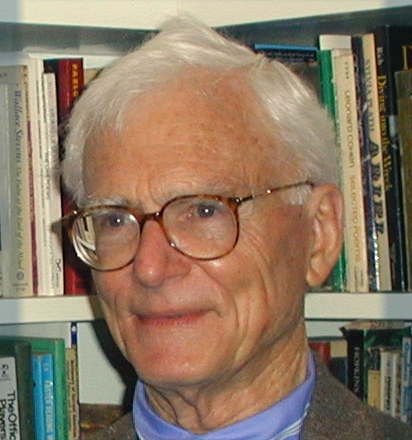
Curtis A. Wilson, the first recipient of HAD's LeRoy E. Doggett Prize in 1998, has recently published a new book: The Hill-Brown Theory of the Moon's Motion: Its Coming-to-be and Short-lived Ascendancy (1877-1984). Published by Springer in 2010, it is described at http://www.springer.com/mathematics/history+of+mathematics/book/978-1-4419-5936-2. There is more information about Wilson at http://had.aas.org/doggett/1998doggett2wilson.html.
Minutes of HAD Business Meeting
10 January 2011, Seattle
I. The meeting was called to order by chair Thomas Hockey.
The minutes of last year's meeting, available online as part of HAD News #76, were approved. Current (2009–11) officers were introduced.
II. Secretary-Treasurer's Report
Joe Tenn reminded those in attendance of all the information available on the HAD website at http://had.aas.org/. HAD News is now published regularly in April and October. Submission of short articles, book reviews, and other items of interest to the membership are encouraged. Deadlines are the equinoxes. Income and expenditures for the first 11 months of 2010 were announced. Final totals for the year are posted on p. 11. HAD membership as of December 2010 totaled 304, including 41 Divisional Affiliate members, who are not members of the AAS.
III. Committee Reports and ongoing HAD Activities
A. Obituary Committee
Jarita Holbrook and Jay Pasachoff reported that the writing of obituaries for all AAS members who passed away during the year was proceeding as planned. Starting in 2011 the BAAS will be an electronic publication, and it is not clear yet where the obituaries will be posted. It was made clear that they will be online, and there will be links to them from both the HAD website and ADS.
B. HAD Prize Committee
Sara Schechner reported that Nathan Sivin, the first recipient of the Donald E. Osterbrock Book Prize, would receive the prize and speak on astronomy in China that afternoon.
Members were asked to nominate individuals for the Division's highest honor, the LeRoy E. Doggett Prize for Historical Astronomy by 15 March 2011.
C. The HAD Booth
Arnold Heiser called for a few additional volunteers to help staff the HAD booth. It was noted that the booth has become both a place to recruit new HAD members and also a gathering place for HAD members during the meetings. Some members called for more eye-catching decorations for the Booth, and the HAD Committee promised to look into this.
D. The Minibanquet
Joe Tenn reported that local resident Woody Sullivan had arranged for the fourth annual HAD Minibanquet to be held at the Asian fusion restaurant Wild Ginger that evening.
IV. The next HAD Meetings
Thomas Hockey reported that HAD's next meeting would be with the AAS and AAVSO in Boston, 22 May 2011, with special sessions on the history of variable star astronomy organized by Tom Williams. The meeting after that will be with the AAS winter meeting in Austin in January 2012. He called for volunteers to organize special sessions for the latter meeting. Several members suggested themes, but only Jay Pasachoff actually volunteered to organize a special session, on Transit of Venus observations.
V. A survey of the HAD membership
Joe Tenn reported that the HAD Committee had decided to survey the membership as to their satisfaction with the Division's activities. This would be done online in February.
VI. New Business & News from Members
David DeVorkin called the members' attention to the forthcoming tenth Notre Dame Conference.
VII. Changing of the Guard
Chair Thomas Hockey introduced the new members of the HAD Committee who would serve from January 2011 to January 2013: Chair Jarita Holbrook, Vice Chair Jay Pasachoff, Secretary-Treasurer Joe Tenn, and committee members Richard Jarrell and Wayne "Ozzie" Osborn. He himself would remain on the Committee as Past Chair. He then turned over the gavel and the famous "ich bin HAD" plaque to Jarita.
Treasurer's Report
| HAD Account | ||
| Balance 12/31/09 | $14,860.10 | |
| Revenue 2010 | ||
| Dues | 2,162.00 | |
| Contributions | 583.00 | |
| Interest | 756.95 | |
| Revenue | 168.00 | |
| Investment Value Change | +1,655.72 | |
| TOTAL REVENUE | 5,325.67 | |
| Expenses 2010 | ||
| Speakers | 1250.00 | |
| Booth | 40.00 | |
| Newsletter | 164.49 | |
| Fundraising | 73.87 | |
| Election | 13.46 | |
| AAS fees | 534.18 | |
| Affiliate member fees | 210.00 | |
| TOTAL EXPENSES | 2,286.00 | |
| Net Change 2010 | +3,039.67 | |
| Balance 12/31/10 | $17,899.77 | |
| Doggett Prize Fund | ||
| Balance 12/31/09 | $30,598.53 | |
| Revenue 2010 | ||
| Contributions | 623.00 | |
| Interest | 997.77 | |
| Investment Value Change | +2,182.51 | |
| TOTAL REVENUE | 3,803.28 | |
| Expenses 2010 | ||
| Honorarium | 1000.00 | |
| Recipient's travel | 1211.83 | |
| AAS fees | 132.71 | |
| TOTAL EXPENSES | 2,344.54 | |
| Net Change 2010 | +1,458.74 | |
| Balance 12/31/10 | $32,057.27 | |
| Osterbrock Prize Fund | ||
| Balance 12/31/09 | 0.00 | |
| Revenue 2010 | ||
| Contributions | 15,055.00 | |
| TOTAL REVENUE | 15,055.00 | |
| Expenses 2010 | ||
| Committee expenses | 77.80 | |
| AAS fees | 4.67 | |
| TOTAL EXPENSES | 82.47 | |
| Net Change 2010 | +14,972.53 | |
| Balance 12/31/10 | $14,972.53 |
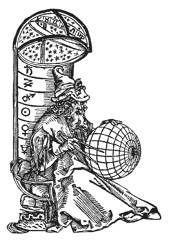
Historical Astronomy Division of the American Astronomical Society
HAD News #78, April 2011, edited by Joe Tenn
Please send contributions for the next issue, comments, etc. to joe.tenn@sonoma.edu
Photo credits: p. 1: J.S. Tenn, brilliantpictures; p. 2: J. Holbrook, J.M. Pasachoff; p. 3: E. Tenn; W. Wells; p. 4: G. Good; p. 5: J.S. Tenn; p. 6: J.S. Tenn; p.8: Ball, R.S., et al., Essays in Astronomy (New York: D. Appleton & Co., 1900), opp. p. 244. For a color photo see Manchester Art Gallery; p. 9: Archival Photographic Files, [apf6-04493], Special Collections Research Center, University of Chicago Library; p. 10: D. DeVorkin; p. 11: AAVSO.
